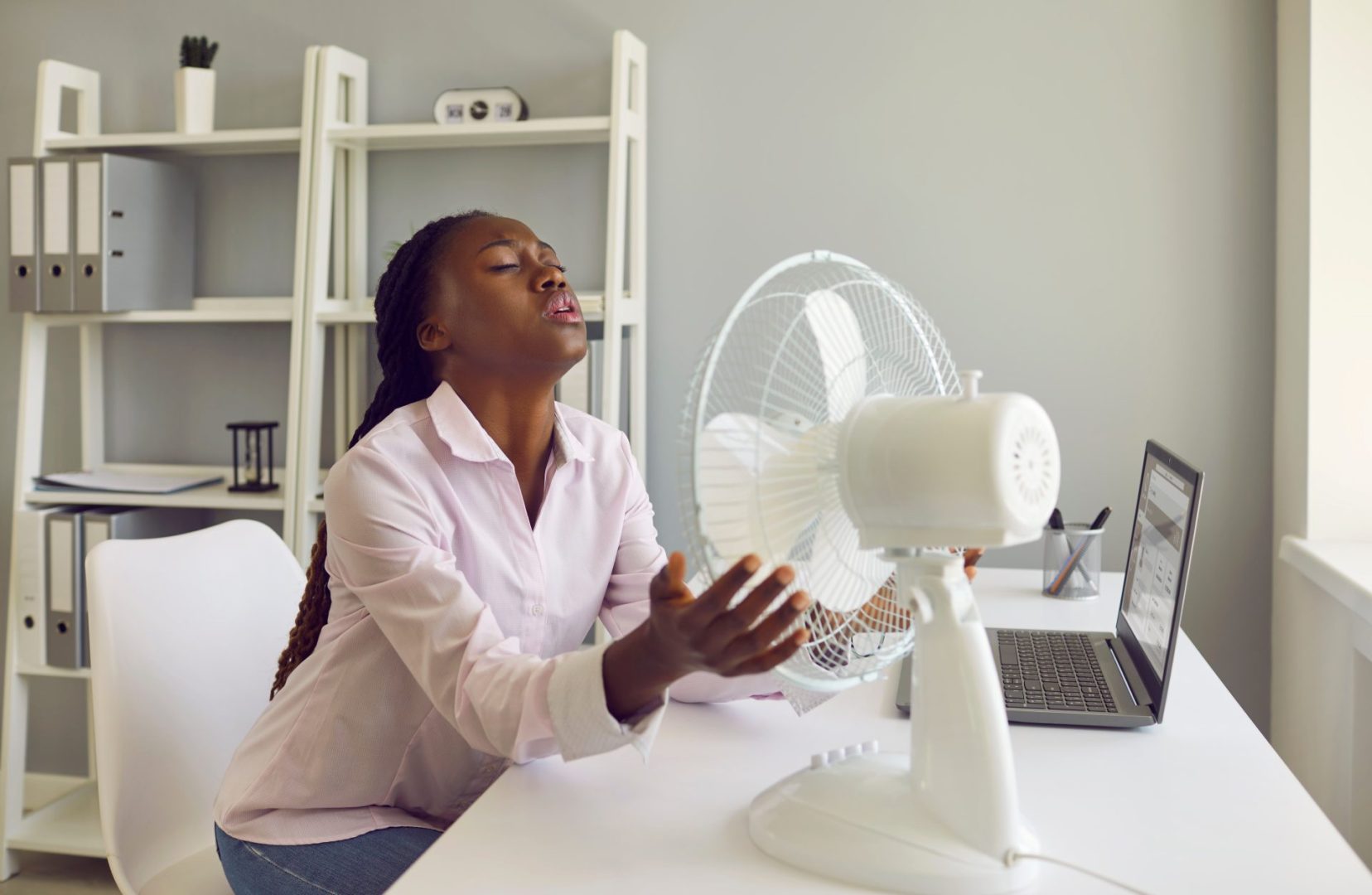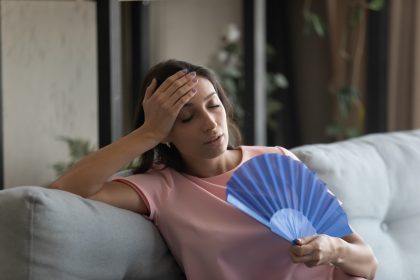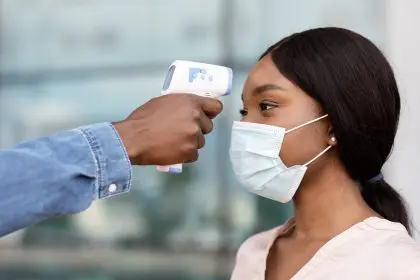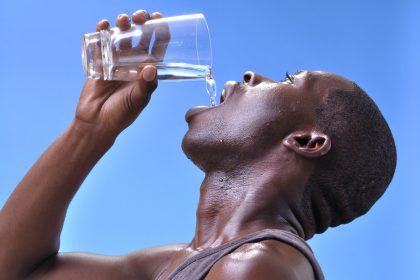Extreme heat represents one of the most dangerous weather-related threats facing Americans today, claiming more lives annually than hurricanes, tornadoes, and lightning combined. As summer temperatures continue to break records across the nation, understanding how to protect yourself and your family becomes increasingly critical for survival and health.
The human body’s ability to regulate temperature becomes severely compromised when exposed to prolonged high temperatures, leading to a cascade of potentially fatal health complications. From emergency room overcrowding to pregnancy complications and mental health crises, the impact of extreme heat extends far beyond simple discomfort, affecting every aspect of human health and well-being.
Nearly half of the global population regularly experiences dangerous heat levels, with millions suffering from heat-related health issues that range from mild discomfort to life-threatening emergencies. The rising frequency and intensity of heat waves demand immediate attention to prevention strategies and emergency preparedness for individuals, families, and entire communities.
Master the science of proper hydration
Understanding proper hydration during extreme heat involves more than simply drinking water when you feel thirsty. By the time thirst signals reach your brain, your body has already begun experiencing the early stages of dehydration, making proactive fluid intake essential for maintaining optimal health and body temperature regulation.
The recommended hydration strategy involves consuming one cup of water every 15 to 20 minutes during heat exposure, totaling approximately 24 to 32 ounces per hour. This consistent intake pattern proves far more effective than consuming large quantities of water sporadically throughout the day, as the human body can only process limited amounts of fluid at any given time.
However, individuals with medical conditions requiring fluid restrictions or those experiencing water retention should consult healthcare providers before increasing water intake. Certain medications and health conditions can affect the body’s ability to process fluids effectively, making personalized hydration plans necessary for optimal safety.
The timing and temperature of fluid consumption also play crucial roles in heat safety. Room temperature or slightly cool water absorbs more quickly than ice-cold beverages, which can cause stomach cramping and slower absorption rates. Additionally, starting hydration efforts before heat exposure begins provides better protection than attempting to catch up after dehydration symptoms appear.
Strategic clothing choices for temperature control
The relationship between clothing and body temperature regulation extends far beyond basic comfort considerations, directly impacting your body’s ability to maintain safe internal temperatures during extreme heat events. Proper clothing selection can mean the difference between comfortable heat management and dangerous overheating scenarios.
Lightweight, loose-fitting garments allow air circulation around the skin, facilitating the natural cooling process of sweat evaporation. Tight-fitting clothing traps heat and moisture against the skin, preventing effective temperature regulation and increasing the risk of heat-related illness. Natural fabrics like cotton and linen typically provide better breathability than synthetic materials.
Light-colored clothing reflects sunlight and heat away from the body, while dark colors absorb and retain solar energy, significantly increasing body temperature. The temperature difference between wearing light and dark clothing in direct sunlight can exceed 10 degrees Fahrenheit, making color choice a critical safety consideration.
Protecting skin from sunburn remains equally important, as damaged skin loses its ability to regulate temperature effectively. Sunburned skin cannot sweat properly, severely compromising the body’s primary cooling mechanism. Wide-brimmed hats, long-sleeved shirts, and sunscreen application provide essential protection against solar radiation damage.
Perfect timing for outdoor activities
Strategic timing of outdoor activities represents one of the most effective methods for avoiding dangerous heat exposure while maintaining active lifestyles during summer months. Understanding daily temperature patterns and solar intensity cycles enables smart scheduling decisions that minimize health risks.
The hottest portions of most days typically occur between 10 a.m. and 4 p.m., when solar radiation reaches peak intensity and accumulated ground heat creates maximum air temperature. During these hours, outdoor temperatures can exceed safe limits for extended physical activity, making indoor alternatives necessary for maintaining exercise routines.
Early morning hours between 4 a.m. and 7 a.m. offer the coolest temperatures and lowest humidity levels, providing optimal conditions for outdoor exercise and work activities. These pre-dawn and early morning periods allow completion of necessary outdoor tasks before dangerous heat levels develop.
Evening hours after sunset provide another window for outdoor activities, though temperatures may remain elevated due to heat retention in pavement, buildings, and other structures. Checking local weather forecasts and heat index readings helps determine safe outdoor activity windows for specific locations and conditions.
Seeking shade during necessary outdoor exposure can reduce effective temperature by 10 to 15 degrees compared to direct sunlight. Even brief periods of shade exposure help prevent heat accumulation in the body while allowing natural cooling processes to function effectively.
Advanced cooling techniques for immediate relief
Implementing effective cooling techniques requires understanding how the human body dissipates heat and which methods provide the most rapid temperature reduction. These techniques can provide life-saving relief during extreme heat events when air conditioning is unavailable or insufficient.
Cool water applications to the skin provide immediate temperature relief through evaporation and direct heat transfer. Taking cool showers, using damp cloths on pulse points, or misting exposed skin with spray bottles creates rapid cooling effects that help maintain safe body temperatures during heat emergencies.
Wearing damp or wet clothing can provide sustained cooling relief, though this technique requires careful monitoring to prevent over-cooling in air-conditioned environments. Wet bandanas around the neck or wrists target pulse points where blood vessels run close to the skin surface, maximizing cooling efficiency.
Strategic home cooling without air conditioning involves blocking solar heat gain through windows and reducing internal heat sources. Closing windows and using blackout curtains or reflective coverings during daylight hours prevents solar heating of interior spaces. Turning off unnecessary electrical appliances and avoiding oven use reduces internal heat generation.
Nighttime cooling strategies include opening windows after sunset to allow cooler air circulation, positioning fans to draw hot air out of living spaces, and using cross-ventilation techniques to maximize airflow. These methods can reduce indoor temperatures by several degrees during overnight hours.
Maximizing air conditioning effectiveness
Air conditioning represents the most effective method for preventing heat-related illness, but proper usage techniques can significantly improve cooling efficiency and reduce energy costs. Understanding how to optimize cooling systems ensures maximum protection during extreme heat events.
Spending several hours daily in air-conditioned environments dramatically reduces heat-related health risks, even for individuals whose homes lack cooling systems. Public buildings like libraries, shopping centers, community centers, and designated cooling centers provide free access to life-saving climate control during heat emergencies.
Combining air conditioning with additional fans can create cooling effects that feel up to four degrees lower than actual temperatures. This technique allows higher thermostat settings while maintaining comfort, reducing energy consumption and costs while preserving cooling effectiveness.
However, fans become counterproductive when outdoor temperatures exceed 104 degrees Fahrenheit, as they begin circulating superheated air that can actually increase skin temperature. During extreme heat events, air conditioning without supplemental fans provides safer cooling than fan-only systems.
Many communities establish designated cooling centers during heat waves, providing free access to air conditioning, water, and medical monitoring for vulnerable populations. These facilities often operate extended hours and provide transportation assistance for individuals who cannot reach cooling locations independently.
Avoiding dangerous beverages during heat waves
Beverage choices during extreme heat significantly impact hydration status and overall heat tolerance, with some popular drinks actually increasing dehydration and heat-related health risks. Understanding which beverages help or hinder temperature regulation can prevent dangerous health complications.
Alcohol consumption during heat waves creates multiple health risks by promoting dehydration, disrupting sleep patterns, and impairing judgment about heat safety. Alcohol acts as a diuretic, increasing fluid loss through urination while simultaneously reducing awareness of heat stress symptoms. This combination can lead to rapid progression from mild heat discomfort to life-threatening heat illness.
Sleep disruption from alcohol consumption compounds heat-related health risks by preventing proper rest and recovery from heat stress. Quality sleep allows the body to repair heat damage and restore energy reserves needed for temperature regulation during subsequent heat exposure.
Sugary beverages, including sodas and fruit juices, can actually worsen dehydration by requiring additional water for proper digestion and metabolism. The high sugar content in these beverages can cause gastrointestinal distress during heat stress, leading to fluid loss through vomiting or diarrhea.
Water remains the optimal hydration choice during heat waves, with fruit-infused water providing variety while maintaining proper hydration properties. Electrolyte beverages may benefit individuals engaged in prolonged physical activity or excessive sweating, but water meets the hydration needs of most people during normal heat exposure.
Recognizing life-threatening heat illness symptoms
Early recognition of heat-related illness symptoms can prevent progression to life-threatening conditions that require emergency medical intervention. Understanding the warning signs and appropriate responses enables rapid treatment that can save lives during heat emergencies.
Heat-related illnesses exist on a spectrum from mild heat exhaustion to potentially fatal heat stroke, with symptoms that can develop rapidly and progress without warning. Early symptoms include excessive sweating, weakness, nausea, headache, muscle cramps, and dizziness that develop after heat exposure.
Heat exhaustion represents a serious condition requiring immediate attention, characterized by heavy sweating, weakness, nausea, headache, and muscle cramps. Skin typically appears cool and clammy despite elevated body temperature, and individuals may experience confusion or irritability.
Heat stroke constitutes a medical emergency requiring immediate professional intervention, as it can cause permanent brain damage, organ failure, or death within minutes. Warning signs include body temperature exceeding 103 degrees Fahrenheit, red and hot skin that may be dry or sweaty, rapid pulse, confusion, and loss of consciousness.
The progression from heat exhaustion to heat stroke can occur rapidly, particularly in vulnerable populations including elderly individuals, young children, people with chronic medical conditions, and those taking certain medications. Immediate cooling measures and emergency medical care provide the best chances for survival and recovery.
If someone exhibits heat stroke symptoms, call 911 immediately while beginning cooling efforts. Move the person to a cool environment, remove excess clothing, and apply cool water to the skin while waiting for emergency responders. Do not give fluids to unconscious individuals, as this can cause choking or aspiration.
Vulnerable populations require special attention
Certain groups face elevated risks during extreme heat events and require additional protective measures and monitoring to prevent heat-related illness. Understanding these vulnerabilities enables targeted prevention strategies that can save lives in high-risk populations.
Elderly individuals often have reduced ability to regulate body temperature due to age-related changes in circulation, medication effects, and underlying health conditions. Their bodies may not signal thirst appropriately, leading to inadequate fluid intake during heat stress. Regular check-ins and assistance with cooling measures become essential for elderly safety.
Young children and infants cannot regulate body temperature as effectively as adults and may not recognize or communicate heat stress symptoms. They require constant adult supervision during heat waves, with particular attention to hydration, appropriate clothing, and limiting outdoor exposure during peak heat hours.
Individuals with chronic medical conditions such as heart disease, diabetes, respiratory problems, or kidney disease face increased heat-related risks due to compromised physiological responses to temperature stress. Medications for these conditions may further impair temperature regulation or increase dehydration risk.
Outdoor workers, athletes, and individuals without access to air conditioning represent high-risk groups requiring specialized heat safety protocols. These populations need enhanced hydration strategies, frequent cooling breaks, modified work schedules, and access to emergency medical care during extreme heat events.
Pregnant women experience increased heat sensitivity due to elevated metabolic rates and circulatory changes that affect temperature regulation. Heat stress during pregnancy can lead to complications affecting both maternal and fetal health, making aggressive cooling measures and medical monitoring essential during heat waves.













